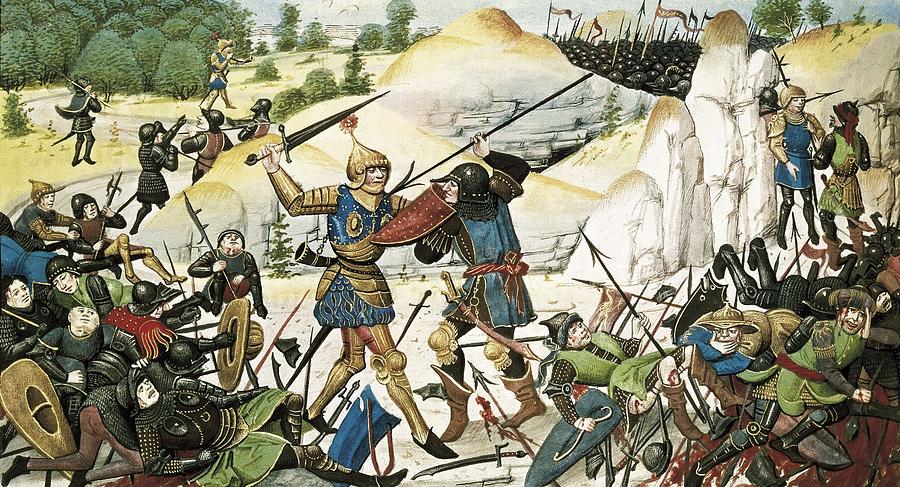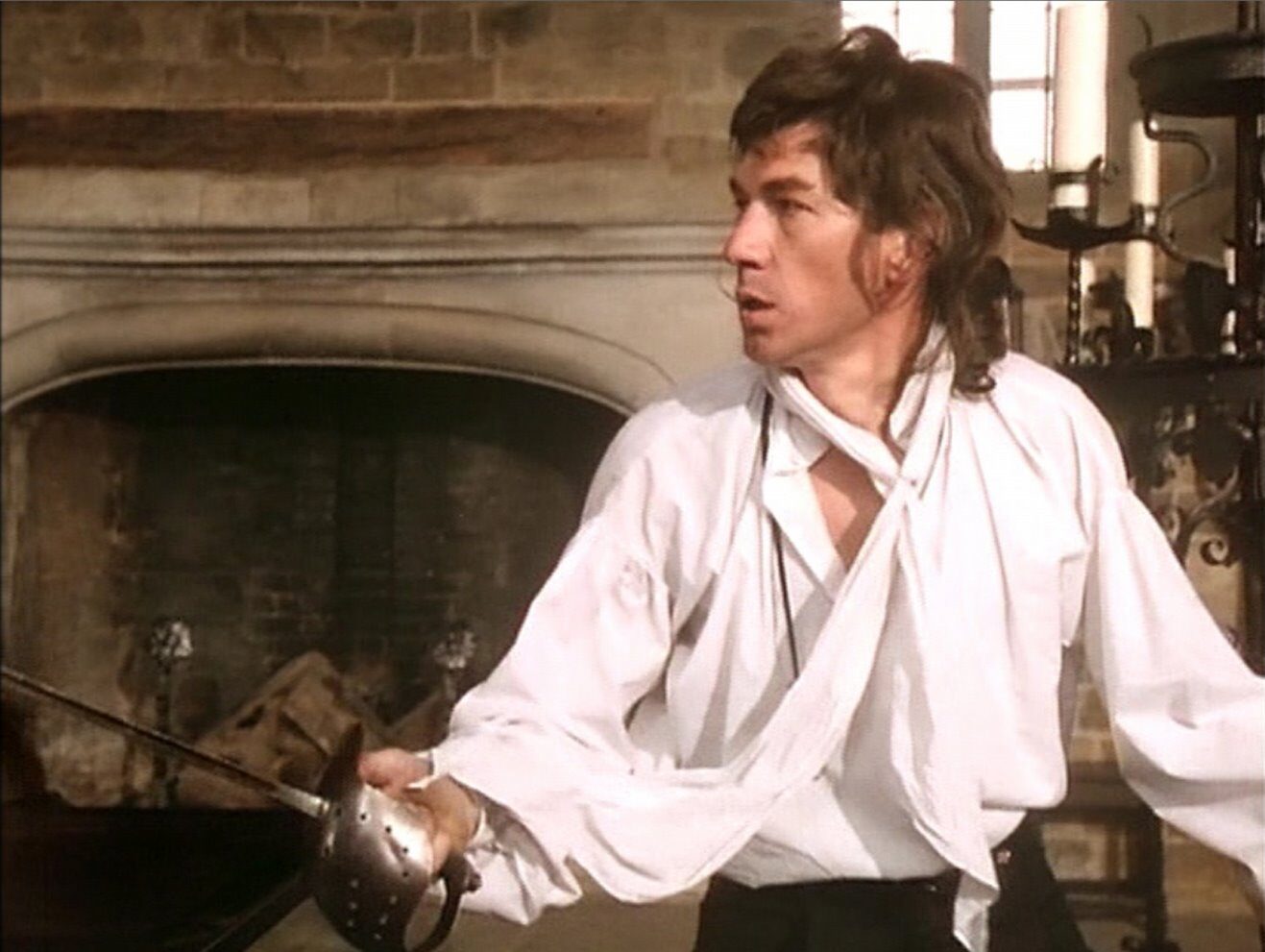Home » Posts tagged 'courage'
Tag Archives: courage
The History of Mr. Polly
H. G. Wells
1910
(A man of precisely 37.5 years of age can’t seem to find success or happiness in life… perhaps he has to do something drastic.)

“HOLE!” said Mr. Polly, and then for a change, and with greatly increased emphasis: “ ‘Ole!” He paused, and then broke out with one of his private and peculiar idioms. “Oh! Beastly Silly Wheeze of a Hole!”
Thus begins an entertaining fictional biography of a man who really needs a whack upside the head– one of several greats in that odd subgenre– Tom Jones, Babbitt, and Updike’s Rabbit series, for examples. (H. G. Wells writing fictional biography? In a contemporary setting? This might surprise those of us, such as myself, who had equated him with science fiction and socialist nonfiction. But anyway…) Our protagonist is an endearing and vivid, if frustrating character, who hides his depression with funny one-liners and his poor education with deliberate mispronunciations. And, as with many colorful characters in real life, beneath the wit cowers a man who hasn’t a clue where he’s going. His path through life is that of a flat boat with untethered sails– he might as easily plummet to his death over a waterfall as drift into a homely port. Or, to use Alfred Polly’s own metaphor, he’s in a hole. And no amount of quaint phrasing and amusing epithet, no ability to make women giggle, and no success as a shopkeeper is going to hoist him out of it.
The Song of Roland
(La Chanson de Roland)
anonymous (Turold?)
late 11th century
(The mightiest and noblest of Charlemagne’s crusading knights is betrayed, but his companions stand fiercely by him as the Saracens attack.)

The year is 778. The brave knight Roland and his army, led by eleven of the noblest warriors in Christendom, watch in horror as an army five times larger than their own approaches through the Roncevaux Pass in the Pyrenees. Roland’s friend Oliver urges him to call for Charlemagne’s aid with his famed olifant horn. Roland will not. He will trust to God, to France, and to his sword Durendal. He shouts a rallying speech to his men– this is their day to shine. They banish fear and meet the Saracens. This is an anthem of a book– a mighty, direct, vibrant punch of a poem. It is simple, stylized, yet well balanced; powerful, but not without subtlety. It is short, as epics go– slim and to the point, forget the historical backgrounds and love stories. This is the earliest surviving and the best of its genre– the “Songs of Deeds”, or Chansons de geste, of medieval French literature, of which there were hundreds. In style, in its portrayal of the values of chivalry, in its composition, and in its spirit, it is the supreme knightly adventure poem.
Cimarron
Edna Ferber
1930
(The Oklahoma land rush of 1889 gives Yancey Cravat an opportunity to rescue his wife from civilized mediocrity, and head west for the untamed life of the pioneer.)

Yancey Cravat is the Cimarron—the wild one, like an aimless river or a jousting bighorn sheep. He may tote legal volumes as easily as a gun, and be as quick with a Shakespeare quote as with a trigger; and yes, he’s a lawyer and the editor of a socially active newspaper… but this is no milktoast city boy. This is Buffalo-Head, the tall, gruff, steel-eyed pioneer for whom three years in the same place or a single day without some sort of risk or conflict is evidently his idea of hell. And, no doubt, the wife of such a one is bound to be some kind of woman: Sabra, a sharp, spirited, strong, self-sufficient saber of a woman. In fact, although most assessments of this book will tell you that its permanence lies in its presentation to the world of the unforgettable Yancey Cravat, who is it that ties the book together? Whom does the narrative follow, when Yancey’s itchy traveling bone takes him to Alaska or the Spanish-American war? Not him, but the determined, toiling Sabra. Granted, she lacks the explosive flash of her husband–her way is much too pragmatic to put her in much danger or make her many enemies. But she is really the central character of the book, the one who grows, the one who succeeds in adapting herself to the various jolting cultural shifts that get thrown into her path by the errant Yancey, or by her son, or by the discovery of oil. At first entry into the fledgling land rush town of Osage, Oklahoma, fresh from the overprotection of her family the proper Venables of Wichita, she breaks into sobs when kissed by a stranger on the street. But give her eight or nine years, and she’s riding in the middle of the night into an Indian reservation during a mescal ceremony and demanding that her unconscious son be thrown onto her cart so she can bring him home. But of course, yes, we do want to hear about Yancey, despite… or maybe partly because of… his refusal to stick around. He’s idealistic, imposing, and indomitable. Take one particular tent meeting, for instance: in the course of giving a sermon, he manages to work in a self-defense killing—yes, the actual killing, not the story of a killing. And when warned that his pro-Indian editorials are going to get him killed, his reply is simply the unearthly death-scream of the Cherokee. (more…)
The Scarlet Pimpernel
Emmuska Orczy
1905
(A master of disguise rescues French aristocrats from the guillotine and drops them safely into London society—until a sly French inspector tracks him down.)

Don’t let the title’s reference to a dainty flower and the femininity of the author fool you. This is no Austen or Brontë novel. It is a hearty adventure, more along the lines of the father of adventure stories Sir Walter Scott, or Dumas, or Stevenson. What a treat to have a woman join these illustrious ranks! Rugged oaths and swordfights may be lacking, but stories stocked with those can easily be found elsewhere. Instead Orczy proficiently places a “caped avenger”-style suspense drama (a genre some say she invented) against a backdrop of fashionable London society. The high manners, the social competition, the gossip, the dress, the flamboyant events… Orczy was a baroness herself, and this is undoubtedly part of the reason why she was able to present these ingredients with such freshness and authenticity. But all this is ancillary to the mystery and excitement that lend this tale its permanent appeal.
Njáls Saga
(Njála)
anonymous (Icelandic)
1270-1290
(A sage in medieval Iceland attempts to restore order in the face of bloody vengeance and warrior’s honor)

The mighty deeds of a free people in struggle are frequently represented in timeless literature—such stories will never go stale. Whether tossed on the stormy Mediterranean, afoot in the forests and scrublands of India, or galloping through prairie grasses among stalwart buttes in the American West, there is something deeply inspiring about a small people forging a life in the face of privation, violence, and treachery. We who live in the comfort of civilization can be tempted to think that a reasonably stable government and the rule of law are guaranteed, automatic, assumed. Or, even if we endure corruption, are wary of the tyranny or selfishness of our leaders, or have suffered at the hands of criminals, we are among millions and are likely to see ourselves as puny actors on an immense stage—what can we possibly do?! How fascinating, then, are the tales of those who managed to defend some fragile order amidst a storm of chaos—those whose survival was assured not by the actions of others, whether their venerated ancestors or soldiers on distant front lines, but by themselves: by the wisdom of their own minds, the words that passed through their own lips, and the swords that hung from their own belts. The Icelandic Sagas—the Íslendingasögur—are epic narratives of this very sort. A man in the Age of Saga, so we are told, could cut his own destiny, no matter what coarse fabric sought to hem him in. And a woman could make the best of things by controlling the men. Anyone who wishes to see how this sort of lifestyle could play out can do no better than to read Njáls Saga (or, in the alternative title that is at once a spoiler, the Saga of Burnt Njál). The professionals tend to consider this the greatest and most well-developed of the 40 or so Icelandic Sagas that were written in the 13th-14th centuries. Whatever the critics say, here we certainly find hefty measures of all the most engaging ingredients in that genre: the bloody swinging of swords and thrusting of spears, the uncompromising defense of honor, the defiant challenge of the sea, the tenuous rise of God over the idols and of Law over bloody feuds, the disastrous fruits of pride and envy, the sly instigations of women, the mystic power of prophecy and fate, the iron duty of loyalty, and the deathgrip of revenge!


